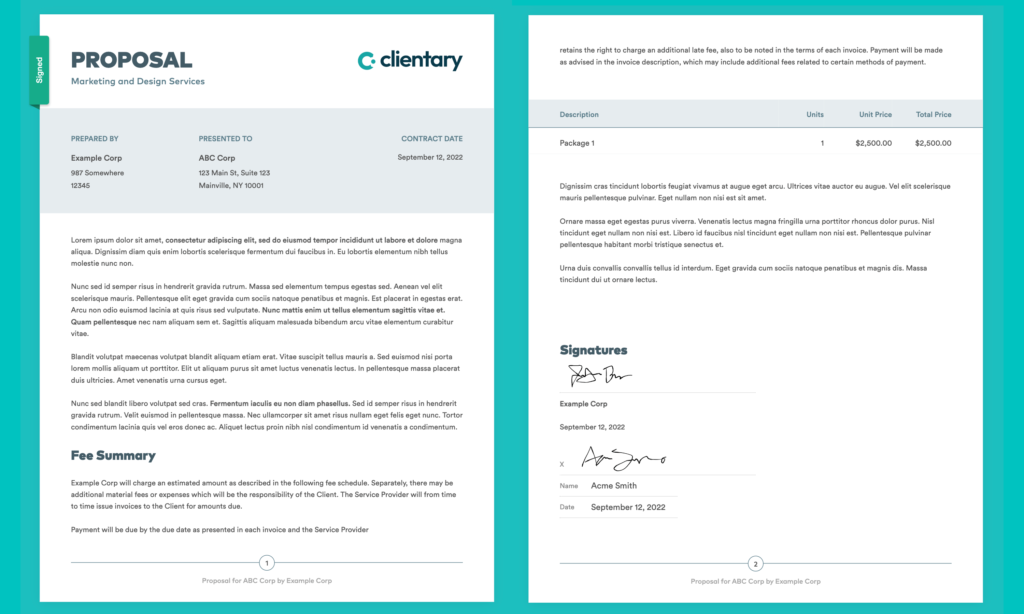Running a small service business can be a complex task, especially when it comes to managing client relationships and keeping track of finances. It’s not uncommon for service business owners to use multiple systems to manage invoicing, proposals, and client data. However, using separate tools for each aspect of your business can lead to duplicated effort, errors, and disjointed client experiences. This is where the power of integration comes into play. By linking your invoicing, proposal, and client management systems, you can streamline your workflow, enhance your productivity, and improve your client interactions. In this article, we’ll explore the benefits of integrating these systems and the impact it can have on your small service business.

The Challenges of Managing Multiple Systems
For service businesses, managing clients, proposals, invoices, and other administrative tasks can be a real challenge. If you’re like many service business owners, you’re likely juggling multiple systems and processes just to keep everything organized and running smoothly. From keeping track of client information, to managing proposals and invoices, to monitoring project progress, it’s easy to get overwhelmed. This can lead to mistakes, miscommunication, and missed opportunities, all of which can negatively impact your business.
The problem is further compounded by the fact that most businesses use separate systems for each of these tasks. For example, you might use one system for invoicing, another for client management, and yet another for proposals. Each of these systems might have its own interface, login, and data format, which makes it difficult to share information between them. This can make it time-consuming and challenging to get a complete overview of your business, and to make informed decisions about how to grow your business and serve your clients better.
The good news is that there is a solution to this problem: integration. By linking your invoicing, proposal, and client management systems, you can streamline your workflow, improve communication, and ensure that you have all of the information you need to make informed decisions about your business. Alternatively, you can adopt a system or platform (like Clientary) that brings all of this functionality into one place, effectively integrating by default.
The Benefits of Integrating Your Invoicing, Proposal, and Client Management Systems
Integrating your invoicing, proposal, and client management systems can bring a multitude of benefits to your small service business. By streamlining these processes, you’ll be able to save time, improve efficiency, and reduce the risk of errors.
First and foremost, integration eliminates the need to manually transfer data between different systems. This not only saves you time, but it also eliminates the possibility of manual data entry errors. This can be especially important when it comes to financial data, as even small mistakes can have significant consequences.
In addition to improved accuracy, integration can also help you gain deeper insights into your business operations. By connecting all of your systems, you’ll have access to a unified view of your clients, proposals, invoices, and other important data. This allows you to better understand the state of your business, identify areas for improvement, and make more informed decisions.
Another key benefit of integration is increased efficiency. When your systems are connected, you can automate many manual tasks, such as generating invoices from estimates / proposals or tracking the status of client payments. This frees up time that you can spend on more important tasks, such as growing your business, developing new products and services, or providing better customer support.
Finally, integrating your invoicing, proposal, and client management systems can also help you build stronger relationships with your clients. By providing a more seamless and efficient experience, you’ll be able to show your clients that you value their time and are committed to delivering high-quality services. This can help build trust, increase client satisfaction, and ultimately lead to increased business growth and success.
Streamlining Your Workflow with Integration
When it comes to running a successful professional services business, efficiency is key. The more time you spend on manual processes and tasks, the less time you have for the things that really matter, like delivering high-quality services to your clients.
One of the biggest benefits of having a platform or system that integrates your key business components is the ability to automate tasks that would otherwise be manual and time-consuming. For example, when a client approves a proposal, you can automatically generate a project from the proposal data, bypassing the risk of having a client fall through the cracks. The same goes for client management data – when a client’s information changes, you can update it in one place and it will automatically update in all linked systems. This helps ensure that your data is always current and accurate, which is essential for making informed business decisions.

Suffer Less Stress, Get More Done
An all-in-one platform like Clientary also enables you to easily share information between systems, which can help streamline collaboration and communication between team members. For example, if a team member creates a proposal, they can easily share the information with colleagues who need to review it, eliminating the need for manual data entry and reducing the risk of errors or omissions. The same goes for invoicing and client management data – you can easily share data between systems to ensure that everyone has access to the information they need to do their job.